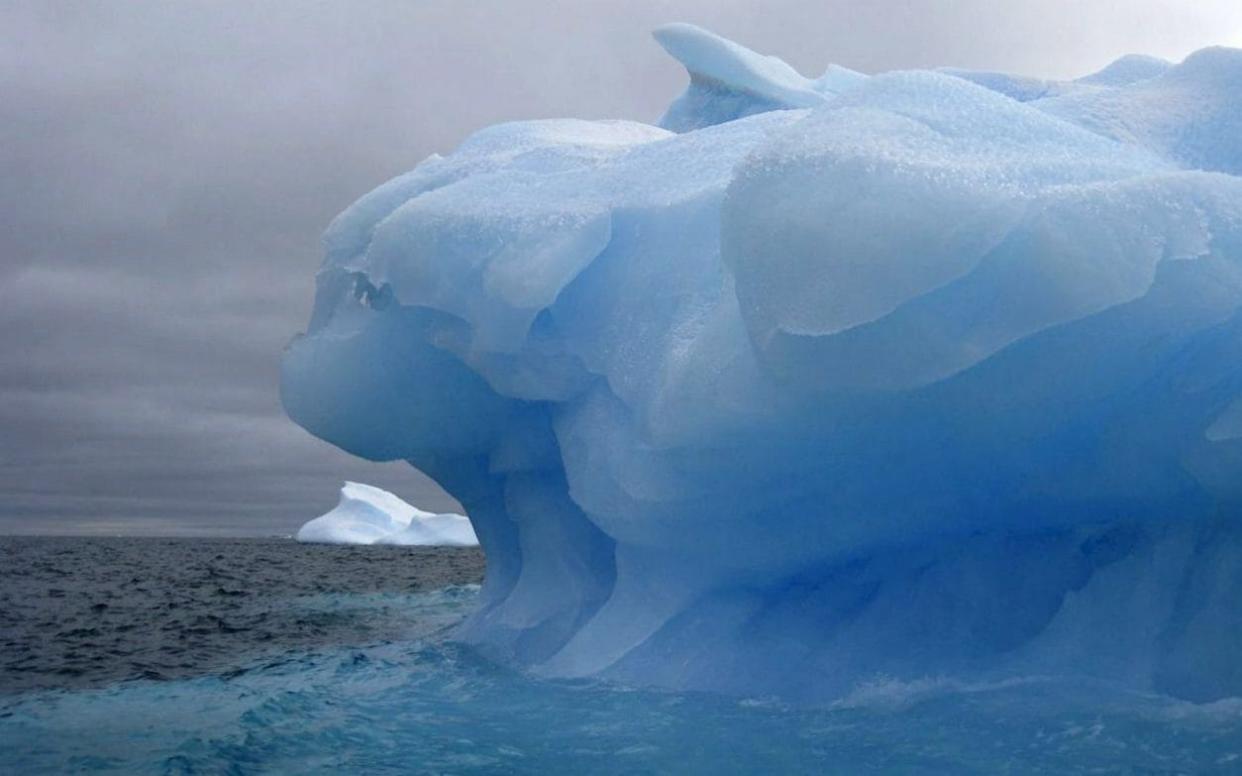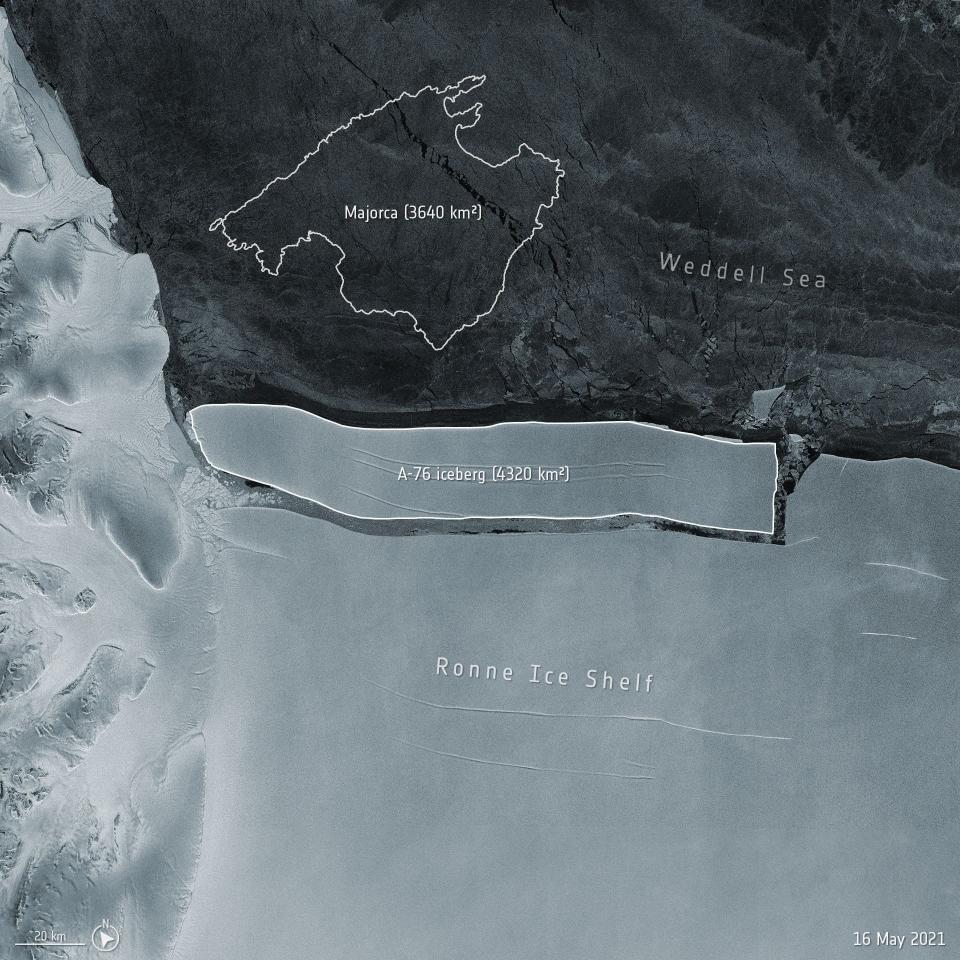World's largest iceberg, equal to size of Somerset, breaks off Antarctica

The world’s largest iceberg, equal in size to Somerset and bigger than the Spanish island of Majorca, has splintered from the frozen edge `of Antarctica and is now adrift in the Weddell Sea.
The new sheet of ice, designated A-76, measures approximately 4,320 square km (2,685m) and is significantly larger than the previous title-holder, A-23A, which stretched 3,380 square km (1,305m).
The British Antarctic Survey initially spotted the floating berg after it broke off the western side of the Ronne Ice Shelf.
Its movement was then confirmed by the European Space Agency’s using images from the Copernicus satellite.
Thousands of penguins were threatened in November last year by what was then considered the largest iceberg as it came close to colliding with a remote South Atlantic island supporting sea life.

It had broken from the Larsen shelf, the fastest warming shelf on the continent.
Luckily, the 160km long A68a splintered before it could hit the British Overseas Territory of South Georgia. A-23A had also broken off from the Larsen Ice Shelf.
The air over Antarctica has warmed twice as fast as the Earth’s average surface temperature, which has increased by one degree Celsius since the 19th century. This rise has disturbed ice that has been stable for over 10,000 years.
Huge chunks of the Peninsula's Larsen Ice Shelf vanished within days in 1995. Further chunks were lost in 2002, while the nearby Wilkins Ice Shelf disintegrated in 2008 and 2009.
But experts say the breakaway of chunks of ice are part of a “natural cycle” for ice shelves that “hadn’t calved anything big for decades”.
“It’s important to monitor the frequency of all iceberg calving, but these are all expected for now,” Laura Gerrish of the British Antarctic Survey said.

